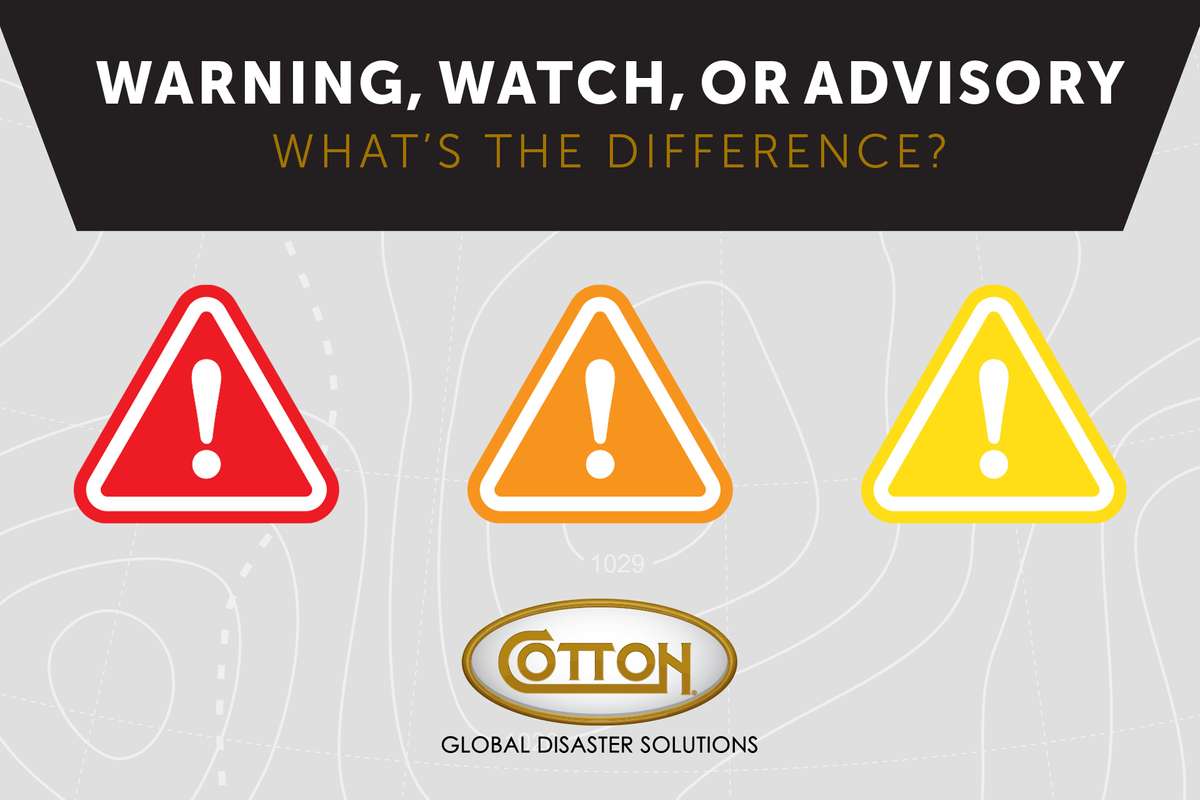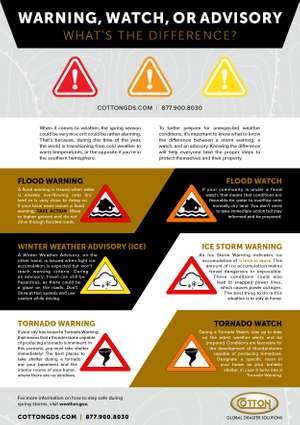When it comes to weather, the spring season could be very nice or it could be rather alarming. That’s because, during this time of the year, the world is transitioning from cold weather to warm temperatures, or the opposite if you’re in the southern hemisphere.
When cold and warm air masses collide, they often create storms and unfavorable weather conditions. Depending on what part of the country you live in, you could get flooding, tornadoes, ice, excessive heat, or high winds, all of which could damage your property. As your trusted partner in remediation and restoration, Cotton Global Disaster Solutions is here to help you prepare your commercial property for the unexpected and will be here, after the storm, to restore your business.
To better prepare for unexpected weather conditions, it’s important to know the difference between a storm warning, a watch, and an advisory. Knowing the difference will help everyone take the proper steps to protect themselves and their property.
Flood Warning vs. Flood Watch
A flood warning is issued when water is already overflowing onto dry land or is very close to doing so. If your local news issues a flood warning, TAKE ACTION. Move to higher ground and do not drive through flooded roads.If your community is under a flood watch, that means that conditions are favorable for water to overflow onto normally dry land. You don’t need to take immediate action but stay informed and be prepared.
Ice Storm Warning vs. Winter Weather Advisory (For Ice)
An Ice Storm Warning indicates ice accumulation of ¼ inch or more. This amount of ice accumulation makes travel dangerous or impossible, so it is strongly discouraged to be on the road or travel during this time. These conditions could also lead to snapped power lines, which causes power outages. The best thing to do in this situation is to stay at home. A Winter Weather Advisory, on the other hand, is issued when light ice accumulation is expected but won’t reach warning criteria. During an advisory, travel can still be hazardous, as there could be a glaze on the roads. Don’t drive at fast speeds and use caution while driving because even a trace of ice on roads can be dangerous.
Tornado Warning vs. Tornado Watch
If your city has issued a Tornado Warning, that means that a thunderstorm capable of producing a tornado is imminent. In this scenario, you must take shelter immediately! The best places to take shelter during a tornado are your basement and the interior rooms of your home, where there are no windows. During a Tornado Watch, stay up to date on the latest weather alerts and be prepared. Conditions are favorable for the development of thunderstorms capable of producing tornadoes. If you haven’t already done so, designate a specific room in your home as your tornado shelter, in case it turns into a Tornado Warning.
For more information on how to stay safe during spring storms, visit weather.gov, or download our comprehensive infographic below.


